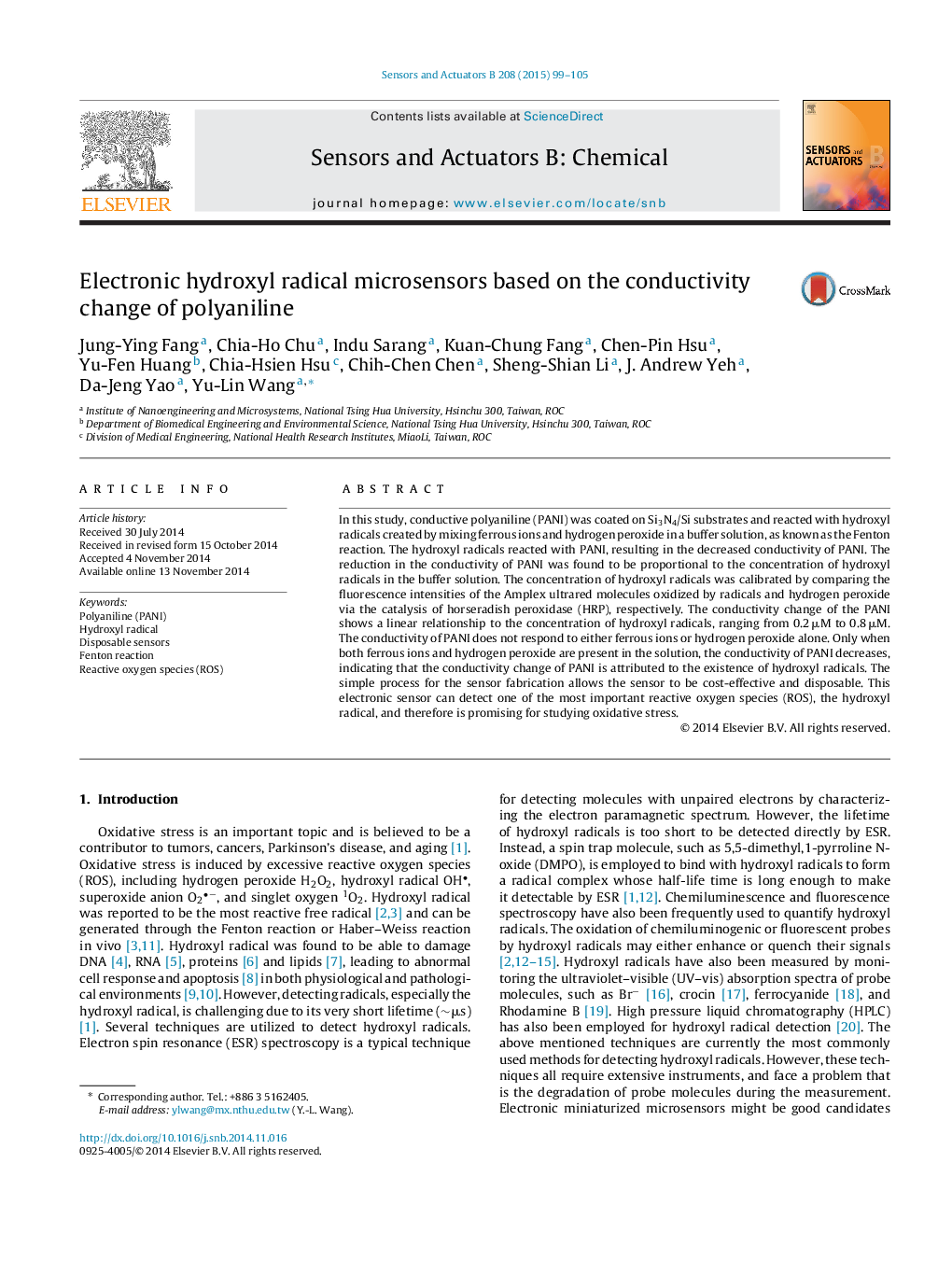| کد مقاله | کد نشریه | سال انتشار | مقاله انگلیسی | نسخه تمام متن |
|---|---|---|---|---|
| 750871 | 1462083 | 2015 | 7 صفحه PDF | دانلود رایگان |
In this study, conductive polyaniline (PANI) was coated on Si3N4/Si substrates and reacted with hydroxyl radicals created by mixing ferrous ions and hydrogen peroxide in a buffer solution, as known as the Fenton reaction. The hydroxyl radicals reacted with PANI, resulting in the decreased conductivity of PANI. The reduction in the conductivity of PANI was found to be proportional to the concentration of hydroxyl radicals in the buffer solution. The concentration of hydroxyl radicals was calibrated by comparing the fluorescence intensities of the Amplex ultrared molecules oxidized by radicals and hydrogen peroxide via the catalysis of horseradish peroxidase (HRP), respectively. The conductivity change of the PANI shows a linear relationship to the concentration of hydroxyl radicals, ranging from 0.2 μM to 0.8 μM. The conductivity of PANI does not respond to either ferrous ions or hydrogen peroxide alone. Only when both ferrous ions and hydrogen peroxide are present in the solution, the conductivity of PANI decreases, indicating that the conductivity change of PANI is attributed to the existence of hydroxyl radicals. The simple process for the sensor fabrication allows the sensor to be cost-effective and disposable. This electronic sensor can detect one of the most important reactive oxygen species (ROS), the hydroxyl radical, and therefore is promising for studying oxidative stress.
Journal: Sensors and Actuators B: Chemical - Volume 208, 1 March 2015, Pages 99–105
